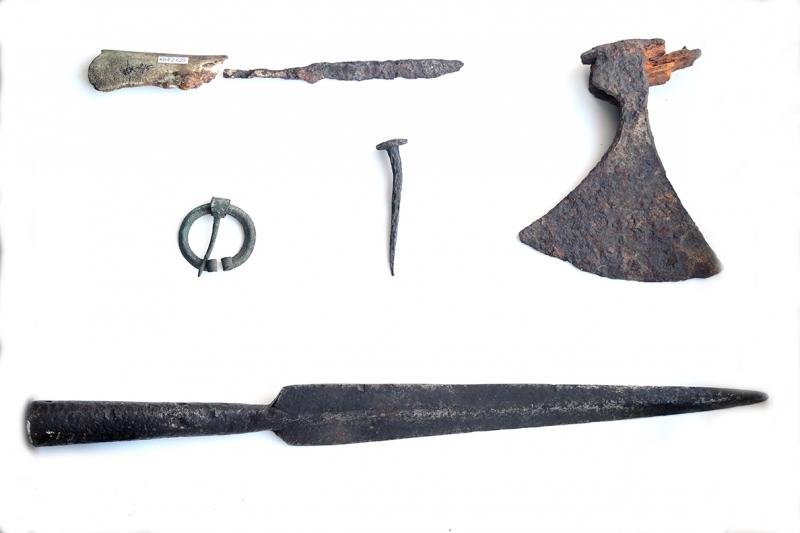Throughout the history of mankind one of the most important question was the question of the phenomenon of death. Attitudes toward death and the posthumous existence of man were expressed through the funeral rite and rituals associated with it. In the 10-12th centuries in the territory of the Polotsk Region the most common were burial mounds. They consisted of burials in accordance with the rite of destruction on the surface of the earth or in shallow pits under the earth mound. Mounds of 10-12th centuries were round and had a hemispherical shape. The burials were united in necropolis, which were located, as a rule, on even dry places near the reservoir. Necropolis was an integral part of the settlement.
In 1966 Belarusian archaeologist G.V. Shtytov was investigated the mound № 2 near the village Lukoml where in the 10-13th centuries was one of the cities of Polotsk principality. During the excavation of the burial there was found an interesting ware complex. Five items from this kurgan burial site are on display in the Museum Local Lore in Polotsk today. Objects such as a battle hatchet, spearhead and knife bone handle with an engraved princely sign allowed G.V. Shtychov suggest that the deceased was a warrior. The sign on the handle, according to the author of the excavation, resembles the trident of Kiev Prince Vladimir Svyatoslavovich, whose name is associated with the seizure and destruction of Polotsk at the end of the 10th century. Izyaslav Vladimirovich, the son of the Polotsk princess Rogneda, who restored the Rogvolodovich dynasty in Polotsk, had a similar sign.

